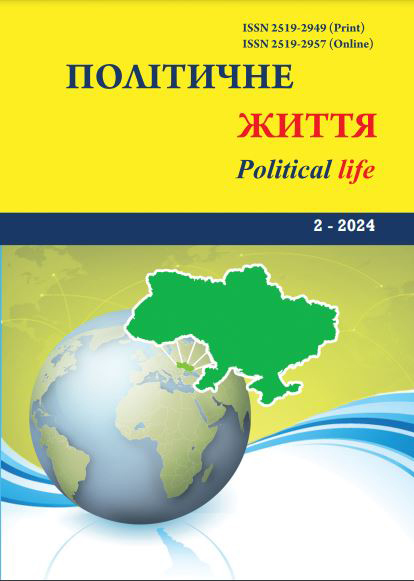China’s geopolitical and economic strategic changes
DOI:
https://doi.org/10.31558/2519-2949.2024.2.26Keywords:
China, USA, geostrategy, geopolitics, geopolitical and economic strategy, «One Belt, One Road»Abstract
The article examines China’s main geopolitical and economic strategic changes, which determine China’s new role as a key player in both regional and global projects. It has been established that China’s geopolitical and economic strategy has been changing along with changes in the international environment for decades.
The stages of the development of China’s geopolitical and economic changes were analyzed, in which it was determined that China’s geostrategy was characterized by rapprochement with the Soviet Union to confront the USA, anti-American imperialism and anti-Soviet revisionism, and integration
into the «world economy».
The key features of changes in the international geostrategic environment and its impact on China’s geostrategy as a whole are studied. The main changes include: the collapse of the USSR and the emergence of independent countries, globalization and economic development, the strengthening of China’s role in the UN, the development of Asian economic integration, the expansion of foreign trade and investment, the allocation of priority to the development of science and technology, and the expansion of influence in global affairs.
The main elements of China’s new geostrategy are considered, such as: using «One Belt, One Road» to achieve strategic land-sea coordination, innovating the thinking of peripheral diplomacy, rethinking a new type of great power relationship, using the «home field» advantage, and managing the setting of order daily, creating the image of a responsible large country, participating in global economic governance and promoting the establishment of a new international economic order.
China’s creation of new international financial instruments, such as the China International Payment System and the Asian Infrastructure Investment Bank, increases its influence in the global financial system.
Conclusions are drawn and prospects for China’s future geostrategy are outlined, effectively using modern mechanisms of multilateral diplomacy in achieving its main strategic goal.
References
Священко З. Участь СРСР у громадянській війні в Китаї (1945 – 1949). URL: https://dspace.udpu.edu.ua/bitstream/6789/8925/1/USSR_in_the_Civil_War_in_China.pdf (дата звернення: 10.12.2023).
Олійник О. М. Китай в «Азійському столітті»: геополітичний вимір, глобальна економічна стратегія, регіональні пріоритети. URL: https://elibrary.ivinas.gov.ua/927/1/китай%20в%20азійському%20столітті.pdf (дата звернення: 15.12.2023).
中国共产党第十四次全国代表大会. URL: https://www.gov.cn/test/2007-08/29/content_730480.htm (дата звернення: 15.12.2023).
论邓小平“有所作为”的国际战略思想_正文_学术动态_福州社科联. URL: https://www.fzskl.com/html/20091116/20091116153010.shtml (дата звернення: 05.01.2024).
Мрія Сі Цзіньпіна. Як Китай прямує до лідерства. URL: https://lb.ua/world/2021/07/29/490461_mriya_si_tszinpina_yak_kitay_pryamuie.html (дата звернення: 10.01.2024).
三种地缘政治学说与“一带一路”倡议. URL: https://www.ciis.org.cn/yjcg/xslw/202007/t20200710_1012.html (дата звернення: 10.01.2024).
Тенденції розвитку ситуації в Азіатсько-Тихоокеанському регіоні. Борисфен Інтел. URL: https://bintel.org.ua/nash_archiv/arxiv-regioni/arxiv-aziya/arxiv-insha-aziya/atr/ (дата звернення: 12.01.2024).
Бульбенюк С. С. Геополітичні й геоекономічні амбіції та «м’яка сила» Китаю: зауваги до дискурсу про особливості просування й утвердження. Китаєзнавчі дослідження. 2022, № 2, С. 39–53.
Чупрій Л. Геополітична роль Китаю в сучасному глобалізованому світі. Журнал «Українознавство» Науково-дослідного інституту українознавства. 2022. № 2 (83). С. 237-238.
Лікарчук Н. В. Глобалізаційний вимір зовнішньополітичної доктрини Китаю. Китаєзнавчі дослідження. 2021, № 1, С. 102–110.
Голянич Б. В., Божок Р. Ю. Основні засади формування зовнішньої політики Китаю. Донецький національний університет імені Василя Стуса. Політичне життя. № 2, 2023. С.119-123.

